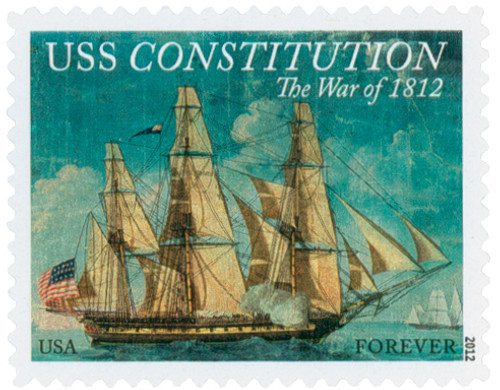
# 4703/4952 - 2012-15 The War of 1812, set of 4 stamps
The Battle Of Plattsburgh
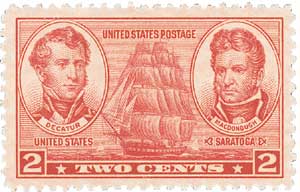
On September 11, 1814, American forces won an important victory at the Battle of Plattsburgh (also known as the Battle of Lake Champlain).
By September 1814, peace talks were being held in the Netherlands in the hopes of bringing an end to the War of 1812. Yet at the same time, the British were forging plans to push into American territory.
Britain’s secretary of State for war and the colonies ordered George Prévost, commander in chief in Canada, to launch an offensive into American territory. But he also warned him to not travel so far that he would risk being cut-off from supply lines. Prévost decided to launch his attack on Lake Champlain. The land attack would be on the nearest large American position at Plattsburgh, New York.
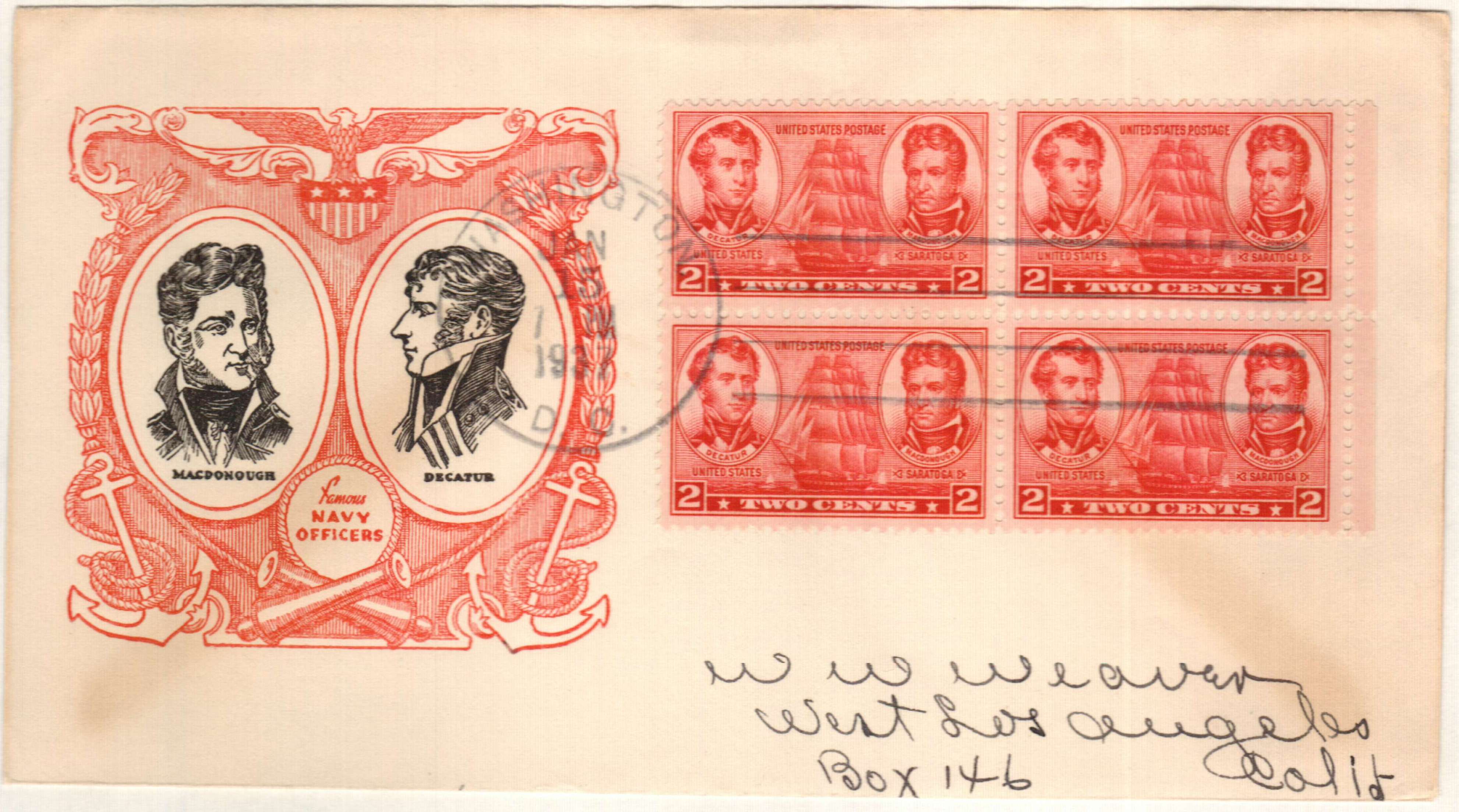
The majority of American troops at Plattsburgh were removed in late August to reinforce Sackett’s Harbor, leaving the fort defended by only about 1,500 men, most of whom were recruits or injured. Eventually, about 2,000 New York and Vermont militiamen arrived to help defend Plattsburgh, though they were largely untrained.
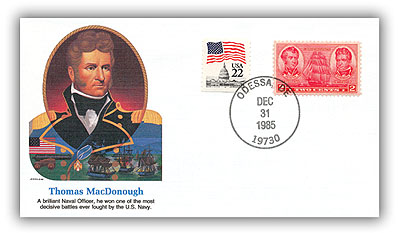
The British began marching to Plattsburg on August 31. The American commander at Plattsburg, Alexander Macomb sent out over 1,000 troops for a delaying action, but they were slowly pushed back to the fort. Though the Americans burnt bridges and mislabeled signs along the way, the British reached Plattsburgh on September 6.
The fighting began on September 7, but the Americans managed to fend off each British attack. They continued to skirmish for a couple of days before the naval battle began on September 11. During those few days, American naval commander Thomas Macdonough set up his ships in Plattsburgh Bay, which would force the British to fight them at close-range, so they would be more evenly matched.
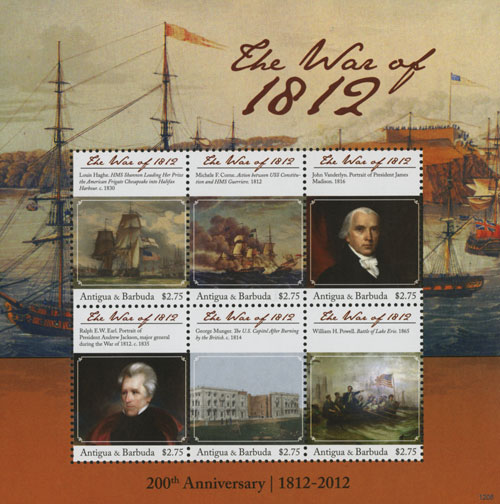
The naval battle began at about 9 am on September 11. The British navy’s newly built Confiance was badly damaged early on and its commander killed early in the fighting. Both sides suffered significant damage in the ensuing fight. This included Macdonough’s flagship, the USS Saratoga. Nearly all of the Saratoga’s starboard-side guns were taken out of action, but Macdonough turned the ship so he could use the guns from the other side.
Macdonough rained fire on the Confiance, and eventually the vessel’s last surviving lieutenant had no choice but to surrender. When the British commanders boarded the Saratoga to surrender, they offered their swords to Macdonough, but he replied, “Gentlemen, return your swords to your scabbards, you are worthy of them.”

The land battle had still been going on during the naval engagement. But when Prévost received word of the loss, he realized that without control of the lake, he couldn’t resupply his men if they managed to take Plattsburgh, so he ordered a retreat.
In the end, the American forces, which were outnumbered on land and sea, managed to earn an important victory. This success, as well as the American defense of Baltimore the following day, took away the leverage that the British negotiators wanted to try to claim territory at the end of the war.
The Battle Of Plattsburgh

On September 11, 1814, American forces won an important victory at the Battle of Plattsburgh (also known as the Battle of Lake Champlain).
By September 1814, peace talks were being held in the Netherlands in the hopes of bringing an end to the War of 1812. Yet at the same time, the British were forging plans to push into American territory.
Britain’s secretary of State for war and the colonies ordered George Prévost, commander in chief in Canada, to launch an offensive into American territory. But he also warned him to not travel so far that he would risk being cut-off from supply lines. Prévost decided to launch his attack on Lake Champlain. The land attack would be on the nearest large American position at Plattsburgh, New York.

The majority of American troops at Plattsburgh were removed in late August to reinforce Sackett’s Harbor, leaving the fort defended by only about 1,500 men, most of whom were recruits or injured. Eventually, about 2,000 New York and Vermont militiamen arrived to help defend Plattsburgh, though they were largely untrained.

The British began marching to Plattsburg on August 31. The American commander at Plattsburg, Alexander Macomb sent out over 1,000 troops for a delaying action, but they were slowly pushed back to the fort. Though the Americans burnt bridges and mislabeled signs along the way, the British reached Plattsburgh on September 6.
The fighting began on September 7, but the Americans managed to fend off each British attack. They continued to skirmish for a couple of days before the naval battle began on September 11. During those few days, American naval commander Thomas Macdonough set up his ships in Plattsburgh Bay, which would force the British to fight them at close-range, so they would be more evenly matched.

The naval battle began at about 9 am on September 11. The British navy’s newly built Confiance was badly damaged early on and its commander killed early in the fighting. Both sides suffered significant damage in the ensuing fight. This included Macdonough’s flagship, the USS Saratoga. Nearly all of the Saratoga’s starboard-side guns were taken out of action, but Macdonough turned the ship so he could use the guns from the other side.
Macdonough rained fire on the Confiance, and eventually the vessel’s last surviving lieutenant had no choice but to surrender. When the British commanders boarded the Saratoga to surrender, they offered their swords to Macdonough, but he replied, “Gentlemen, return your swords to your scabbards, you are worthy of them.”

The land battle had still been going on during the naval engagement. But when Prévost received word of the loss, he realized that without control of the lake, he couldn’t resupply his men if they managed to take Plattsburgh, so he ordered a retreat.
In the end, the American forces, which were outnumbered on land and sea, managed to earn an important victory. This success, as well as the American defense of Baltimore the following day, took away the leverage that the British negotiators wanted to try to claim territory at the end of the war.





